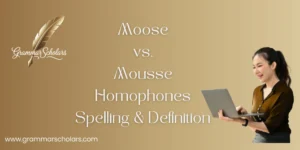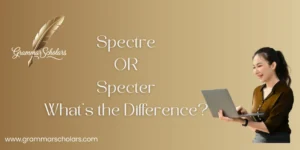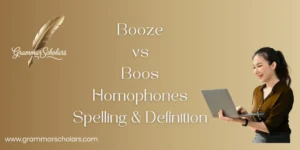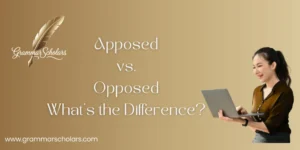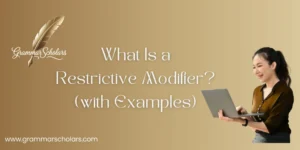When I first started teaching English, I thought I had grammar all figured out – until I discovered non-finite verbs. These verbs don’t conform to time, which gives them a timeless, even mysterious quality. They’re like undercover agents, quietly working in sentences without demanding attention. I often compare them to invisible bricks that hold a house together. They may look simple, but their role in language is quite special. What sets them apart is how they never show tense, unlike finite verbs that tick along with the clock.
Many students are surprised: “I didn’t even know these were verbs!” That’s because they often fly under the radar, even though they appear in instructions, stories, and everyday speech. Whether you’re building grammar skills or want to better express yourself, learning about non-finite verbs can change your understanding of how the world uses words.
Despite their quiet appearance, these verbs are key in shaping clear, natural sentences. When you start to think of them as helpers instead of rule-breakers, you’ll begin to care about how you use them. There are different kinds of non-finite verbs, each one fitting into the wall of language like a puzzle piece.
Why Non‑finite Verbs Matter
Non‑finite verbs play a key role in complex sentences. They help you:
- Combine ideas without repeating subjects
- Vary sentence structure for a more engaging flow
- Convey nuanced actions (e.g., intentions, reasons, timing) with precision
Consider this example:
Walking to the store, Maria decided to call her friend, hoping to share some good news.
Here, walking, calling, and hoping to work together to create a seamless, layered thought. Understanding non‑finite verbs unlocks this kind of fluent expression_essential for academic essays, business emails, creative writing, and daily conversation.
What Are Non‑finite Verbs?
Non‑finite verbs are verb forms that can’t function as the main verb in a clause, meaning they don’t show tense or agreement. They include:
- Gerunds (–ing verbs acting as nouns)
- Participles (–ing or –ed verbs acting as adjectives or adverbs)
- Infinitives (“to” + base form or bare in some cases)
| Feature | Gerund | Participle | Infinitive |
| Form indicator | verb + –ing | verb + –ing or –ed | to + base verb or bare base form |
| Function in a sentence | noun | adjective or adverb-like | noun, adjective, adverb, complement |
| Does it show tense/subject form? | No | No | No |
Without tense or agreement, non‑finite verbs can pack more meaning into compact phrases like:
- “Reading books is his hobby.”
- “The broken window startled us.”
- “He stepped back to listen.”
Each example uses a different type of non‑finite verb to make ideas more concise and powerful.
Key Characteristics of Non‑finite Verbs
Non‑finite verbs differ from finite verbs because they:
- Don’t change form based on subject or tense (no, she reads, they read)
- Can’t stand alone as the main action in a clause_need context or helper verbs
- Serve various roles: acting like nouns, adjectives, adverbs, or complements
- Forming building blocks of things like participle phrases and infinitive clauses
This flexibility shines in complex sentences:
Having finished her work, Jenna went home.
Here, “Having finished her work” uses a participle phrase to show a completed action leading to another.
The Three Forms of Non‑finite Verbs
Gerunds
- Form: verb + -ing
- Works like a noun
- Can serve as a subject, object, or after prepositions
Participles
- Present participle (–ing)
- Past participle (–ed, –en, irregular)
- Describe nouns (adjectival) or modify entire clauses
Infinitives
- Form: to + base verb (or bare form in some constructions)
- Extremely versatile:
- As subjects: To err is human.
- As objects: She wants to learn.
- As adverb modifiers: He paused to listen.
Knowing their form–function mapping helps you build stronger, clearer sentences.
Gerunds: When Verbs Become Nouns
Definition & Formation
Gerunds are created by adding –ing to base verbs (e.g., swim → swimming). Despite ending in –ing, they behave like nouns, not verbs.
Core Functions
- As subjects: Jogging sharpens your mind.
- As objects: She avoided answering the question.
- After prepositions/phrasal verbs:
- He’s excited about starting college.
- They insisted on paying.
Gerund vs. Present Participle
Both end in –ing, but compare:
- Gerund (noun): Painting is relaxing.
- Participle (adjective/adverb): Painting the fence, Tom sang.
In the first, “painting” acts like a noun. In the second, it modifies the subject’s action.
Common Collocations
| Verb + Gerund Collocation | Example Sentence |
| enjoy doing | She enjoys hiking. |
| avoid doing | They avoid making the same mistakes. |
| suggest doing | I suggest trying sushi at that place. |
| finish doing | He finished writing his report. |
Participles: Adjective-Quality Verbs
Present vs Past Participle
- Present participle (–ing): the singing bird
- Past participle (–ed, –en, irregular): the broken vase
They modify nouns or pronouns, providing detail and texture.
How They Work
- As adjectives: The crying baby needed comfort.
- In participle phrases: Arriving late, she missed half the meeting.
Avoiding Misplaced/Dangling Participles
Keep the subject linked to the participle:
- Misplaced: Running to catch the bus, the rain started. (Rain can’t run)
- Correct: Running to catch the bus, Sarah got soaked.
Infinitives: The Versatile Verb Form
Bare vs To‑Infinitives
- To-infinitive: to run
- Bare infinitive: run (used after let, make, help, had better)
Both can act like nouns, adjectives, or adverbs, making them extremely flexible.
Common Uses
- As a subject, to travel the world appeals to her.
- As objects: He hopes to win.
- As adverbs: She paused to think.
- In adjective clauses: She has a book to read.
Split Infinitives
A split infinitive happens when something goes between to and the verb (to boldly go). It’s not wrong_just use wisely for emphasis or rhythm.
Gerund vs Infinitive: Quick Guide
| After Verb | Use Gerund | Use Infinitive |
| like | I like swimming. | I like to swim. |
| enjoy | She enjoys dancing. | _ |
| want | _ | They want to leave. |
| decide | _ | He decided to wait. |
Final Thoughts
Non-finite verbs – gerunds, participles, and infinitives seem subtle, but they carry immense power in shaping polished, natural English. Unlike finite verbs that carry tense and subject agreement, these versatile verb forms work quietly in the background. They let you build fluid sentences, reduce repetition, and convey layered ideas with elegance.
Whether you’re writing an academic paper, giving a presentation, or casually telling a story, understanding how to use non-finite verbs can transform your expression. Think of them as tools that add depth, style, and rhythm to your language without demanding attention.
To truly master non-finite verbs:
- Pay attention to their roles in real-world sentences.
- Practice rewriting clunky statements using gerunds or infinitives.
- Watch for errors in modifier placement and verb agreement.
- Learn common verb patterns that pair with either gerunds or infinitives.
It’s not just about rules_it’s about flow, clarity, and confidence in your voice.
FAQs
What’s the difference between finite and non-finite verbs?
Finite verbs show tense and agree with the subject. They’re the main verbs in a sentence.
Non-finite verbs do not show tense, and they can’t be the main verb of a clause. Instead, they function as nouns, adjectives, or adverbs.
Example:
- Finite: He runs daily.
- Non-finite: Running daily keeps him healthy.
Can a sentence begin with a non-finite verb?
Yes, and it’s very common_especially in participial phrases or infinitive phrases.
Examples:
- To learn a language well, you must practice daily.
- Walking through the park, I spotted a blue jay.
Just make sure the subject that follows the phrase is logically connected to the action described. Otherwise, you may create a dangling modifier.
What is the difference between a gerund and a participle?
Though both use the –ing form of a verb, their functions differ:
- Gerund: functions as a noun
Example: “Swimming is fun.” - Participle: functions as an adjective or adverb
Example: “Swimming across the lake, she felt alive.”
The key difference is what role they play in the sentence.
Are infinitives always used with “to”?
Not always. Infinitives have two forms:
- To-infinitives: to go, to learn, to be
- Bare infinitives: go, learn, be
Bare infinitives appear after certain verbs like let, make, help, watch, and hear.
Examples:
- Let him go.
- I watched her dance.
Is using a split infinitive (e.g., “to boldly go”) grammatically wrong?
No, it’s not wrong. While traditional grammar advice frowned upon it, modern usage accepts split infinitives_especially when they improve rhythm or clarity.
Examples:
- Awkward: She decided quietly to leave.
- Better: She decided to quietly leave.
Many style guides now accept or even encourage split infinitives when they sound more natural.


